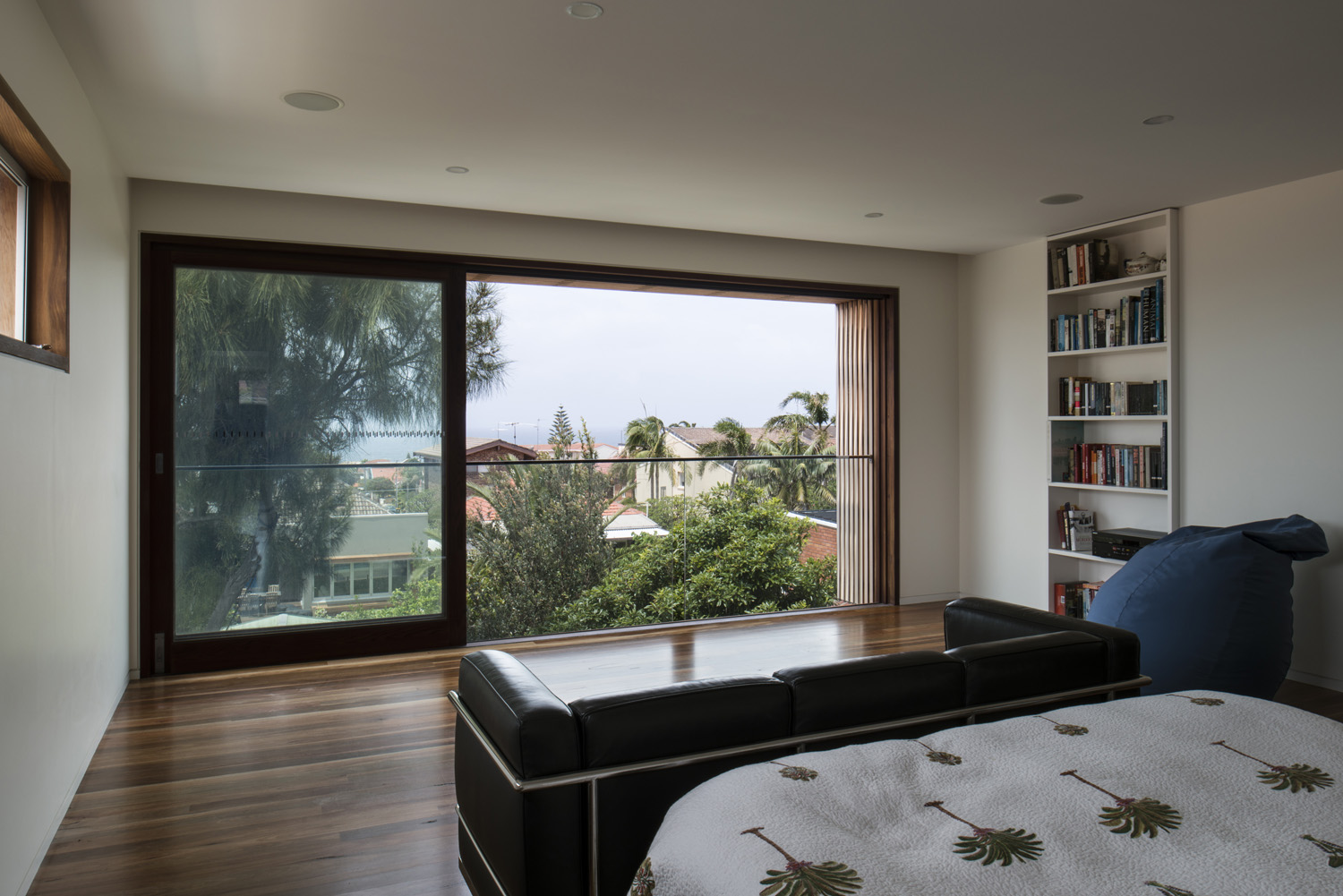The quest to revive a heritage-listed home, more than 120 years old, becomes a labour of love for its owner and architect.

Originally, this Hunters Hill house, now called “Summerhill”, was called “Wellwood” and is a listed heritage item, built in the early 1880s. Its builder was a stonemason, William Swindall, who is recorded as living in the home from 1885 to 1899.
Recently, the original larger property was subdivided, allowing the heritage building to be sold separately from the remaining part of the site.
“The existing building had a character and charm well known and valued by the community. This character captivated the owner and his family and led them to purchase the property,” said architect Jean Rice.
However, the house, unoccupied for many years, was in a dangerous condition and on the verge of structural collapse. The external walls were constructed of two skins of stone with rubble fill between and the internal walls are brick. The side and internal walls were originally poorly bonded together.
Ground water had been discharging into the ground, saturating the soil around the building and washing mortar out of joints. This resulted in the two side (north and south) walls tipping out at the top at the centre and separating from the internal cross wall. The south side had tipped out about 100mm at the top centre and the north about 200mm. The water also provided a supply for the termites that had inflicted extensive damage.
The urgent imperative was to stabilise the stonework, which was in danger of collapse. The engineer advised that if there was a wet period, the walls could move further and collapse outwards. The heritage fabric was to be conserved with minimal change. Additions and alterations were to be allowed for, but not undertaken at this stage. First-stage work was not to preclude later change.
The client’s brief for the project was to devise a method of stabilisation of the building and to prevent future reoccurrence of the structural failure and deterioration, as well as provide advice on the conservation of the building fabric, namely the plaster walls and ceilings and timber floors.
A plan also had to be developed for future additions and alteration so that works undertaken in the initial conservation phase were consistent with possible future additions and alterations.
The house was structurally stabilised and the stormwater drainage was extensively upgraded. The fabric of the building was conserved or repaired with similar materials. The kauri floorboards were retained, where sound, and boards were salvaged for repairs from rooms where there was extensive borer and termite damage. The original plaster was patched using traditional solid plaster techniques to match the existing and matching cornice profiles.
“The approach was to have minimum intervention and retention of the character and details of the place and its patina of age. This led to a proposal to the engineer that a method be developed to ‘stand up’ the stonework rather than rebuild it. The engineer and architect in consultation developed a unique method. The stonemasons were specially selected because of their ability to undertake unusual and challenging work,” said Jean.
“The stabilisation of the stonework without rebuilding required development of an original methodology and new techniques. The outer skin of the double-skinned stonework was in regular courses but the inner skin was random. It would have been extremely difficult to rebuild the walls and retain the character if the stonework had to be dismantled and rebuilt,” she said.
The method developed was to gradually push the wall as a whole into a stable alignment, as close to vertical as possible, and to stabilise it there.
The footings and soil were investigated in detail. Sketches were drawn of each wall, showing each stone and existing cracks and movement. Locations were selected for a support frame and for props and jacks (racking). The walls were then temporarily propped using vertical soldiers packed off the wall and padded, and with props at each vertical member at an angle to the wall. The props were then adjusted to take the load of the wall.
Loose material and projecting bricks from the internal cross wall and ceiling were cleared out. Floorboards adjacent to the side walls were lifted and salvaged and props were installed to lift the roof off the side walls. Mortar was raked out from selected stones to form lines of weakness.
Using jacks built into the racking, pressure was gradually applied in succession to each prop to straighten the wall. Once this was achieved, the exterior mortar joints were repointed with lime mortar. The props were gradually removed from roof structure and the wall reloaded.
The wall was then stabilised using helical ties to pin together the two skins of stonework, the side wall and the cross wall and the roof to the side wall from above. The footing and wall below ground was progressively opened up and the joints repointed and a mass concrete footing added adjacent to the lowest footing stone in parts of each wall. The props and racking were then removed and the wall repointed. Cracks in the interior walls were stitched, with stainless-steel ties inserted in brick joints at regular centres. The whole process was then repeated on the other unstable wall of the building.
Conservation works could then proceed. Most important was reconnection of the stormwater drains and installation of a metre-deep strip drain on the uphill side of the house connected to the stormwater. Ground levels were adjusted to slope away from the building and towards the strip drain, and a waterproof skirt added under the surface to also discharge to the new drain.
The front of the house has the typical cottage plan with a central hall and two rooms on either side, all with fireplaces. This section has a steeply pitched hipped roof while the rear has a skillion roof, both of which were reclad in prefinished corrugated steel sheeting. The rear had dining and kitchen spaces and service spaces. The original room functions were retained and fittings replaced in a style compatible with the character of the place.
Fortunately, the method used meant much of the internal plaster survived and was able to be re-adhered to the wall. The missing sections were patched with traditional multi-coat lime plaster.
Traditional paints were used and an early Victorian colour scheme selected for the four front rooms. Period light fittings were chosen and suspended from the ceiling roses. The surviving French-polished joinery was not stripped but was carefully repolished, keeping the original finish.
The garden was reworked, keeping the original formal central front path and side driveway. Retaining walls were added where needed and were designed to be distinct from the original, but not dominating. Plantings were traditional species and lawns.
According to Jean, “The rich, warm exterior stonework is my favourite part of the place. The formal front rooms are my favourite parts of the interior, with the soft texture of the limewash, the conserved French-polished joinery and the original polished floorboards.
“This renovation is unusual as there was little change to the planning of the building because the owner liked it in its original form. However, there was major innovative structural intervention to achieve conservation with minimal intervention.
“The client worked on the project himself and gained satisfaction from bringing the place back from the verge of collapse. There was a continual interest during the construction period from local residents and passers-by, who where delighted to see this much-loved local landmark being conserved and came and looked at the work.
“The house is now leased as a residence but the owner hopes in the longer term to establish a gallery or similar use that would allow public access.”
Project Particulars:
Designed by: Jean Rice Architech
02 9029 5982
0430 082 440
jean@jeanrice.com.au
www.jeanrice.com.au
Involvement primarily with conservation and stabilisation works
The engineer was: Hari Gohil of Shreeji Consultant
02 9487 4889
0430 082 440
mail@shreejiconsultant.com
www.shreejiconsultant.com
Photography by: Kylie Hilton, Hyperion Design
0418 218 151
kylie@hyperiondesign.com
www.hyperiondesign.com
Built by: Peter Nardone (owner) and sub-contractors
Stonemason: Stonemason & Artist PL, Rick Timperi
0418 677 939
stonemasonartist@ozemail.com.au
www.stonemasonartist.com.au
Flooring: Original kauri pine wide boards and new and second-hand matching flooring
Walls: Original Sydney sandstone, dry-pressed bricks and solid-plaster three-coat work
Air-conditioning: Natural ventilation
Kitchen: TM Joinery — Marrickville
Benchtop: Interior Marble — Silverwater
Cabinetry: TM Joinery — Marrickville
Cooktop: Set in location of original fuel stove within chimney which has been used for exhaust
Sanitary fixtures + bathroom fittings: Original bath resurfaced, Thermoglaze
Lighting: Selected antique fittings from Recollections
Windows + external doors: Original cedar and pine doors and windows
Landscaping: CDR Landscaping
Entrance porch/awning: Original front verandah conserved, new tiles laid within original stone edge, new Colorbond bullnosed roof matching original profile, rear verandah new tiles with new sawn sandstone edging
Front fence: Fence unchanged, new vehicle gates




